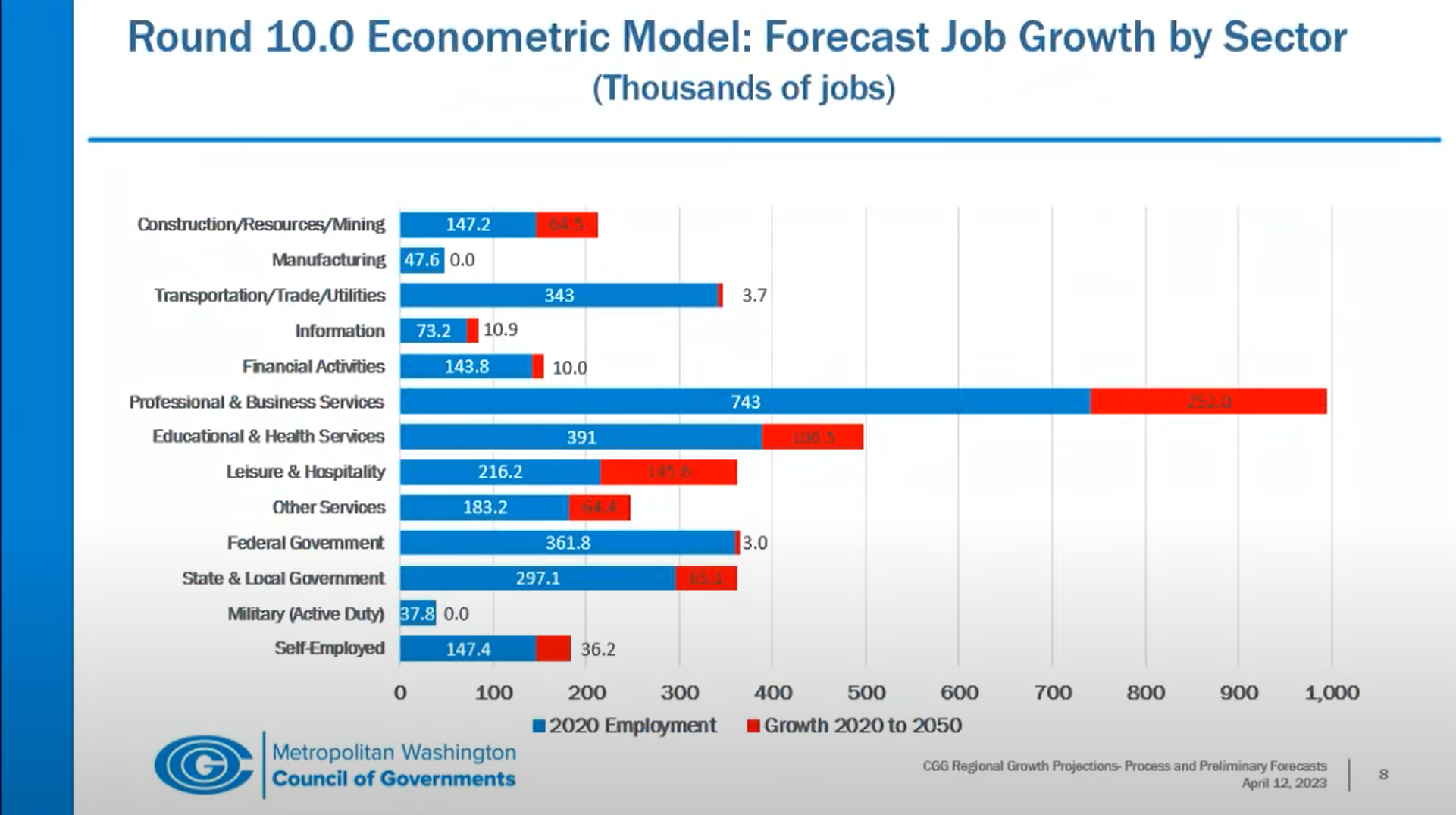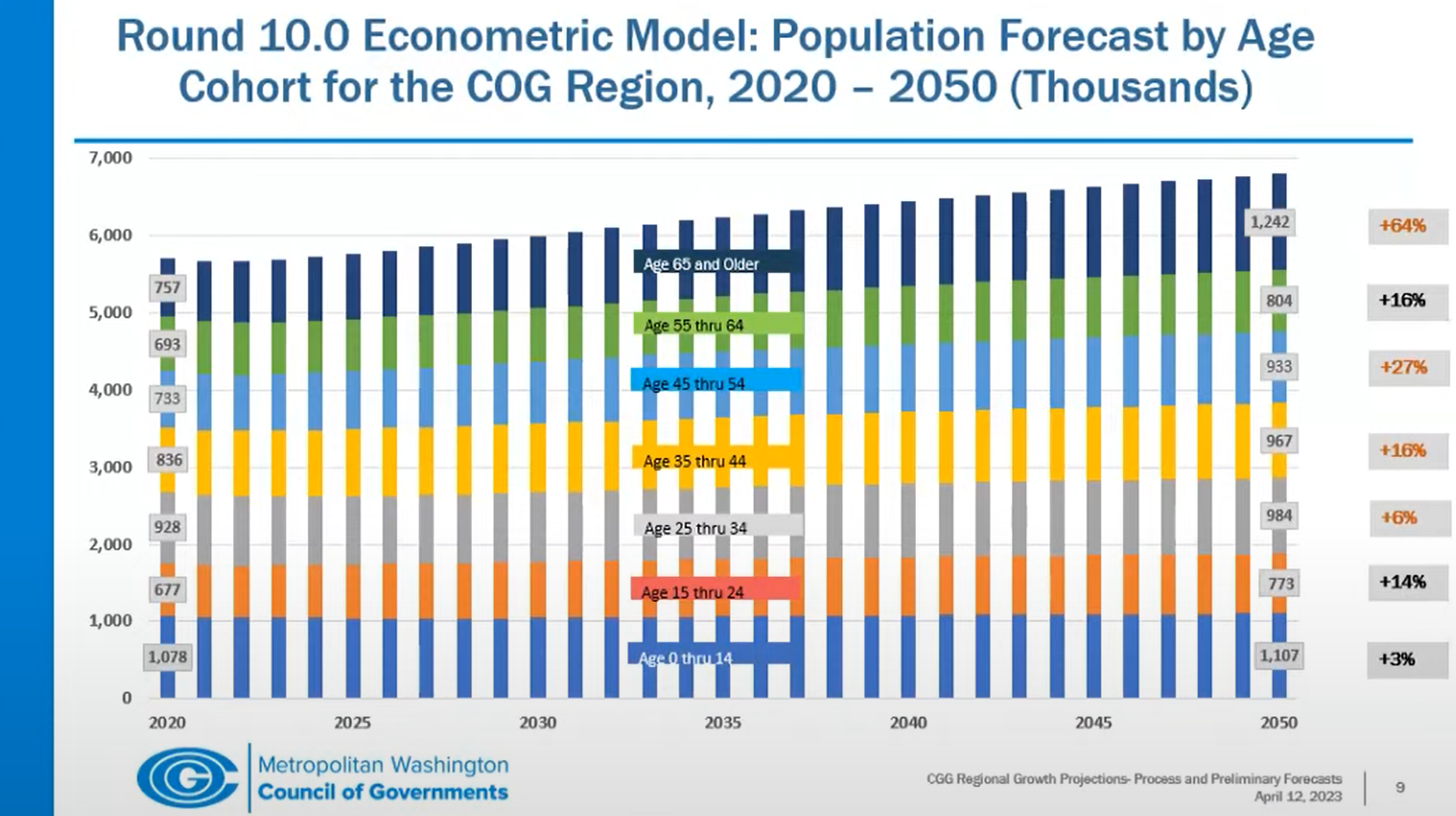The D.C. region is set to add 1 million jobs by 2050, according to a forecast released Wednesday by the Metropolitan Washington Council of Governments.
In the next 30 years, the “professional and business services” sector is projected to gain more than 250,000 jobs.
“That’s management consulting and legal services,” COG director of Community Planning and Services Paul DesJardin said. “It’s the full gamut of the incredibly talented workforce we have here.”
The education and hospitality sectors are also expected to grow quickly in the next few decades. The forecast said schools will likely add more than 100,000 jobs by 2050. Hotels and restaurants will likely gain nearly 150,000 positions.
These three sectors will account for 75% of job growth in the region, according to the report.

The forecast is the first of its kind since the pandemic, and it paints a positive picture for employment in the D.C. region.
“These new forecasts reinforce our confidence in the region’s resilience and show we are positioned for steady growth despite these uncertain times,” COG board chair and Montgomery County Council member Kate Stewart said in a statement.
“It’s another reason for continued collaboration across our jurisdictions to seize new opportunities and address housing, transportation, and other issues in our interconnected and growing region.”
The forecast also predicted that 1.5 million more people will either move to the region or be born here. But not all age groups will grow at the same rate.
“We are an aging population,” director DesJardin said. “Our economic competitiveness is imperative on our ability to attract and maintain talent.”
The number of residents age 65 or older is set to increase by 64% by 2050, while the number of residents younger than 14 is projected to only increase by 3%, according to the COG forecast.

“These new forecasts are unlike any we’ve undertaken before at COG due to ongoing societal changes following COVID,” director DesJardin said in a statement.
“With this in mind, we undertook additional analyses to consider a wider range of outcomes in our forecasts, estimated changes to the use of commercial space, and assessed changes to housing and household sizes.”
The COG said 700,000 new households will be built in the next three decades to match the increasing population and employment. But these homes will hold fewer people, according to the forecast.
By 2050, the average household size will be 2.5, the report said.








